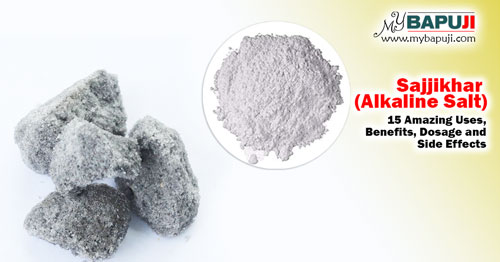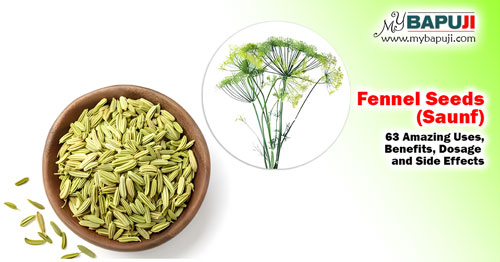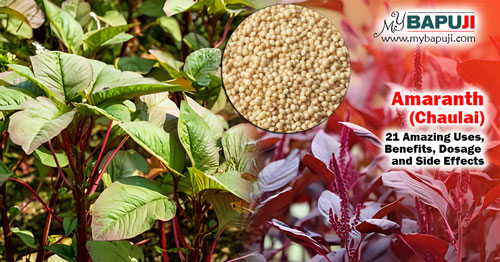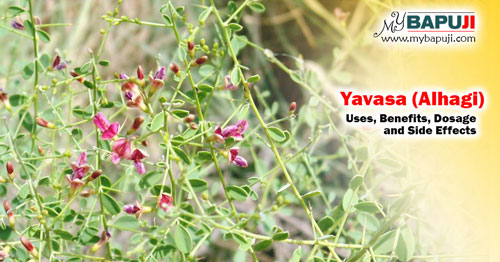Last Updated on April 13, 2024 by admin
Introduction
Sutra Neti, an age-old yogic practice, has been a cornerstone in maintaining nasal health and ensuring proper breathing. This article delves deep into its origins, techniques, and benefits, guiding you through the nuances of this revered practice.
Definition of Sutra Neti
Sutra Neti is a traditional yogic technique involving a thread or cloth to clean the nasal passage, enhancing the breathing process. This practice, rooted in ancient wisdom, is more than just a physical activity; it’s a holistic approach to well-being.
Differentiation between Water Neti and Sutra Neti
While both Water Neti and Sutra Neti aim at nasal cleanliness, the former uses water to cleanse the nostrils, whereas the latter employs a thread or cloth. Water Neti is often considered a preliminary step, preparing individuals for the more advanced Sutra Neti.
Importance of Nasal Cleanliness and Proper Breathing
A clean nasal passage ensures unobstructed airflow, leading to better oxygen intake. This not only aids in proper breathing but also impacts overall health and mental well-being. Breathing is our primary source of life energy, and any obstruction can lead to various health issues.
History and Origin of Sutra Neti
Ancient Practices and its Significance in Yoga
Originating from ancient India, Sutra Neti has been documented in classical yogic texts. It was believed that a clean nasal passage could enhance one’s meditation practices, leading to spiritual growth. Ancient yogis practiced this technique to attain higher states of consciousness.
Evolution of the Technique Over Time
While the core principle remains unchanged, the technique has seen variations, with modern adaptations making it more accessible to the masses. Today, with the global spread of yoga, Sutra Neti is practiced by many across different cultures and regions.
Materials Needed for Sutra Neti
- Silky cloth or raw cotton thread: Acts as the primary tool for cleaning. The texture ensures a gentle yet effective cleaning process.
- Pure bee hive wax: Used to coat and prepare the cloth/thread. This natural wax ensures the thread moves smoothly without causing any harm.
- Bowl for melting wax: A ceramic or metal bowl is ideal. Ensure it’s clean and free from any residues.
- Pure ghee (optional): Acts as a lubricant, easing the process. Ghee, with its medicinal properties, also offers additional benefits.
Step-by-Step Guide to Sutra Neti Technique
- Preparing the Cloth or Thread: Choose a silky cloth or raw cotton thread, approximately 1.5 feet long. The length and texture are crucial for effective cleaning.
- Waxing and Shaping the Cloth/Thread: Melt the bee hive wax in a bowl and immerse the cloth/thread. Once coated, shape it to a crescent form. This shape ensures easy navigation through the nasal passage.
- Proper Sitting Posture: Adopt the Kaga Asana posture for optimal results. This posture aligns the nasal passage, making the process smoother.
- Insertion Technique for Nostrils: Gently insert the prepared thread into one nostril, guiding it till it reaches the mouth. This requires patience and practice.
- Breathing Patterns During the Activity: Breathe through the open nostril, ensuring a calm and steady pattern. Proper breathing ensures the thread moves smoothly.
- Frequency and Repetition Recommendations: For beginners, practicing 20-24 times for both nostrils is ideal. Gradually, one can increase the frequency based on comfort and expertise.
Alternative Methods
Using Rubber Sutra for Beginners
For those new to the practice, a rubber sutra offers a gentler introduction, ensuring ease and comfort. This method, while not traditional, is a stepping stone to the more authentic thread technique.
Benefits of Starting with Rubber Neti
It’s flexible, less intimidating, and acts as a stepping stone to the traditional thread method. The rubber texture ensures a gentle touch, making it ideal for beginners.
Precautions and Safety Tips
- Importance of Supervision by a Yoga Guru: Especially for beginners, guidance ensures the technique is correctly followed. A guru’s expertise can prevent any potential mishaps.
- Avoiding Hurried Practices: Rushing can lead to discomfort or injury. It’s essential to approach Sutra Neti with patience and mindfulness.
- Pre-practice Nasal Care with Ghee: A few drops of ghee can lubricate the nostrils, making the process smoother. Additionally, ghee’s anti-inflammatory properties can soothe the nasal passage.
Guidelines for Practicing Sutra Neti
The frequency of practicing Sutra Neti varies based on individual needs, experience, and comfort levels. Here are some general guidelines:
- For Beginners: If you’re new to Sutra Neti, it’s recommended to start practicing once every 2-3 weeks. This allows you to become accustomed to the technique without overdoing it.
- Regular Practitioners: Once you’re familiar with the practice and have been doing it for some time without any discomfort, you can increase the frequency to once a week.
- Therapeutic Use: If you’re using Sutra Neti for therapeutic reasons, such as to alleviate sinusitis symptoms or to combat allergies, you might practice more frequently, even daily. However, this should be done under the guidance of a trained instructor or healthcare professional.
- Preventative or Maintenance: For general nasal hygiene and maintenance, practicing once every 1-2 weeks is sufficient for most individuals.
It’s essential to listen to your body. If you experience any discomfort, irritation, or other adverse effects, it’s advisable to reduce the frequency or consult with a trained instructor or healthcare professional. Always ensure that the technique is performed correctly and that all materials used are clean to avoid potential complications.
Benefits of Sutra Neti
This practice, when done correctly, offers a range of benefits for both physical health and overall well-being. Here are some of the primary benefits of Sutra Neti:
1. Improved Breathing: By clearing obstructions in the nasal passages, Sutra Neti can enhance the flow of air, leading to better oxygen intake and improved breathing.
2. Nasal Hygiene: Sutra Neti helps in removing accumulated dirt, mucus, and other impurities from the nostrils, promoting nasal cleanliness.
3. Sinus Relief: Regular practice can help in draining the sinus cavities, reducing the risk of sinusitis and alleviating symptoms in those who already have the condition.
4. Enhanced Sense of Smell: Cleaning the nasal passages can sharpen the sense of smell, as obstructions that might hinder odor detection are removed.
5. Relief from Allergies: By removing allergens trapped in the nasal passages, Sutra Neti can provide relief from allergic reactions and symptoms like sneezing and nasal congestion.
6. Strengthened Vision: According to traditional beliefs, the practice can enhance eyesight and prevent eye diseases.
7. Mental Clarity: Improved breathing can lead to better oxygenation of the brain, promoting mental clarity, improved concentration, and reduced brain fog.
8. Balanced Nervous System: The practice can stimulate nerve endings in the nasal passages, which can have a balancing effect on the parasympathetic and sympathetic nervous systems.
9. Prevention of Nasal Ailments: Regular cleaning can prevent the onset of certain nasal conditions, such as nasal polyps or growths.
10. Enhanced Meditation: Clean nasal passages can aid in pranayama (breath control exercises) and meditation, as breathing plays a crucial role in these practices.
11. Boosted Immunity: By keeping the nasal passages clean, Sutra Neti can potentially reduce the risk of respiratory infections.
It’s essential to note that while Sutra Neti offers numerous benefits, it should be practiced correctly and under the guidance of a trained expert, especially for beginners. Proper technique and precautions are crucial to reap the benefits and avoid potential side effects.
Testimonials and Personal Experiences
“Ever since I started practicing Sutra Neti, my chronic sinusitis has significantly reduced. The technique, while challenging initially, has brought immense relief.” – Amita, Yoga Practitioner
“Under the guidance of my guru, I’ve found Sutra Neti to be transformative for my meditation practices. My focus and concentration have improved manifold.” – Rajesh, Spiritual Seeker
Side Effects of Sutra Neti
Sutra Neti is an ancient yogic practice that involves cleaning the nasal passage using a thread or cloth. While it offers numerous benefits, like many practices, it can have potential side effects if not performed correctly. Here are some side effects and
precautions associated with Sutra Neti:
- Velopharyngeal Stenosis: Vigorous or incorrect practice of Sutra Neti can lead to velopharyngeal stenosis, a condition where there’s a narrowing of the velopharyngeal opening, which can cause nasal obstruction.
- Nasal Irritation: The insertion of the thread or cloth might cause irritation or slight abrasion in the nasal passage if not done gently.
- Nosebleeds: If done aggressively, there’s a risk of inducing nosebleeds, especially in individuals with sensitive nasal passages.
- Infection: If the thread or cloth used isn’t clean, there’s a risk of introducing bacteria or other pathogens into the nasal passage, leading to infections.
- Anosmia: Incorrect practice can lead to a temporary or permanent loss of the sense of smell.
- Discomfort or Pain: Especially for beginners, the practice might cause discomfort or pain. It’s essential to ensure that the thread or cloth is smooth and free from any rough edges.
- Allergic Reactions: Some people might be allergic to the materials used, like certain types of cloth or the wax.
- Breathing Difficulties: If not done correctly, it might lead to temporary breathing difficulties, especially if the thread gets stuck.
Precautions:
- Always learn and practice Sutra Neti under the guidance of a trained and experienced instructor.
- Ensure that the thread or cloth used is clean and suitable for the practice.
- Start gently and avoid forceful insertion.
- If you experience any discomfort, pain, or other adverse effects, stop the practice immediately and consult a healthcare professional.
It’s essential to approach Sutra Neti with caution and awareness, recognizing that while it offers many benefits, it’s not suitable for everyone, and incorrect practice can lead to complications.
Frequently Asked Questions (FAQs)
Q: What exactly is Sutra Neti?
Answer: Sutra Neti is an ancient yogic technique that involves cleaning the nasal passages using a specially prepared thread or cloth. It’s a part of traditional yogic cleansing practices aimed at improving breathing and overall nasal health.
Q: How often should I practice Sutra Neti?
Answer: For beginners, it’s recommended to practice once every 2-3 weeks. As you become more accustomed to the technique, you can adjust the frequency based on comfort and individual needs. Always consult with a trained instructor for personalized guidance.
Q: Can children practice Sutra Neti?
Answer: While it’s possible for children to practice, it’s crucial to ensure they are of an appropriate age and maturity level. Always ensure the practice is supervised by an experienced instructor and that the child is comfortable with the procedure.
Q: Are there any risks associated with Sutra Neti?
Answer: Like any practice, if not done correctly, there can be risks such as nasal irritation, infections, or discomfort. It’s essential to learn the technique from a trained expert and ensure that all materials used are clean and safe.
Q: Can I practice Sutra Neti if I have a cold or sinus infection?
Answer: It’s advisable to avoid Sutra Neti during active infections or when experiencing severe nasal congestion. The practice can be resumed once the symptoms subside, but always consult with a healthcare professional or yoga instructor if unsure.
Q: What materials do I need for Sutra Neti?
Answer: The primary materials are a specially prepared thread or cloth, and in some methods, pure bee hive wax. Some practitioners also recommend using pure ghee as a lubricant for the nostrils.
Q: I tried Sutra Neti and felt discomfort. Is this normal?
Answer: Mild discomfort can be expected for beginners, but any severe pain or prolonged discomfort isn’t typical. If you experience this, stop the practice immediately and consult with an expert.
Q: Can Sutra Neti help with allergies?
Answer: Sutra Neti can help clear allergens from the nasal passages, potentially providing relief from allergic reactions. However, it’s not a replacement for medical treatments. Always consult with a healthcare professional regarding allergies.
Q: How long does a typical Sutra Neti session last?
Answer: A session can last anywhere from 5 to 15 minutes, depending on the individual’s comfort and experience level.
Q: Can I practice Sutra Neti during pregnancy?
Answer: While Sutra Neti is generally safe, it’s always best to consult with a healthcare professional or experienced yoga instructor before practicing any new technique during pregnancy.
Conclusion
Sutra Neti, with its myriad benefits, is a testament to the wisdom of ancient yogic practices. While it might seem daunting initially, with proper guidance and patience, it can become an integral part of one’s wellness routine. Embrace the journey of Sutra Neti and discover a path to holistic health and well-being.
इस लेख का हिंदी अनुवाद यहाँ पढ़ें ☛ सूत्र नेति के लाभ, विधि और सावधानी
Disclaimer: This article is for informational purposes only and should not be considered medical advice. Always consult with a qualified healthcare professional before starting any new herbal treatment.






